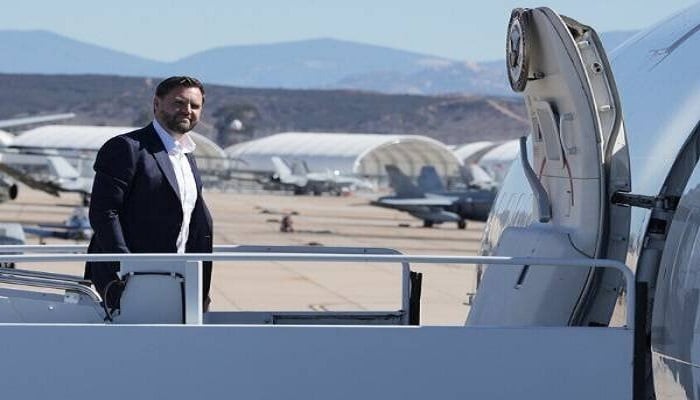PNN – Informed sources, referring to the US Vice President’s visit to Tel Aviv and three possible scenarios for the fate of the Gaza ceasefire, stated that the fate of the war depends more than anything on Washington’s stance.
According to the report of Pakistan News Network, citing the Lebanese newspaper Al-Akhbar, following the visit of US Vice President JD Vance to Tel Aviv, informed sources, referring to three possible scenarios for the fate of the Gaza ceasefire, announced that the fate of the war depends more than anything on Washington’s position.
Trump’s vice president’s mission in the occupied territories
According to this report, even America’s possible seriousness in preventing a return to war does not guarantee that the situation will not escalate, and the chances of success remain limited unless the Zionist regime shows its genuine willingness to make substantial concessions, which seems unlikely given Tel Aviv’s security and political calculations.
Informed sources emphasized that, of course, one cannot speak of an immediate collapse of the ceasefire, but rather evidence points to a gradual escalation of the situation through intermittent clashes and ceasefire violations, which keeps the agreement on the verge of collapse, but does not destroy it completely.
According to Al-Akhbar, the continuation of the ceasefire no longer depends on the will of both sides, Hamas and the Zionist regime, but on the direct and continuous pressure exerted by the administration of US President Donald Trump, which sees the continuation of the ceasefire as an essential strategic benefit to advance its vision and interests after the war in Gaza.
However, Vance’s trip was not only aimed at preventing the collapse of the ceasefire through immediate political pressure, but he also had a strategic goal in mind, which was “to set the negotiating table for the next stage of the ceasefire agreement, after the completion of the handover of the bodies of the Zionist prisoners.”
Read more:
Trump’s ceasefire: From “political psychosis” to Israel’s “strategic deadlock”
3 complicated conditions for Trump’s ceasefire
Meanwhile, the Trump administration’s stated goal is to maintain the status quo in order to achieve a comprehensive vision for Gaza based on three difficult axes: the disarmament of Hamas, which is the most complex condition, and the deployment of an international security force in the Gaza Strip, which is just as difficult as the disarmament of Hamas.
However, the obstacles to the American mission appear to be numerous and potentially impossible, making Washington’s post-war vision all but impossible. This is especially true given that Hamas will not voluntarily lay down its weapons, which are its source of legitimacy, power, and existence.
It is clear that the Zionist regime does not accept any political presence for Hamas in Gaza and demands the complete elimination of this movement. Furthermore, the Gaza Strip is in a humanitarian catastrophe, with the scale of destruction unimaginable and the infrastructure completely destroyed, making it extremely difficult to implement any agreement in practice.
3 scenarios for the fate of the ceasefire in Gaza
In this regard, informed sources outline 3 possible scenarios for the next stage:
Continuation of the status quo
The United States is pressing to prevent the ceasefire from collapsing, Hamas is slowly handing over the bodies of dead Israeli prisoners scattered in various areas, and Tel Aviv is partially opening or closing the Rafah crossing, depending on domestic conditions.
Meanwhile, fighting, albeit limited, continues along the line of contact, without the ceasefire being fully broken. In such a scenario, no real negotiations can take place and no vision for the post-war period can be offered.
Back to war
Despite the Zionist regime’s clear desire to resume the war against the Gaza Strip, the decision to do so does not fundamentally depend on the regime, but rather on the American position, which can give Tel Aviv the green light to return to war or contain it.
Limited understanding under US supervision
In this scenario, the parties take calculated steps regarding the “day after agreement.” Such a scenario is not a solution, nor even an agreement, but an organized management of the dispute.
The conclusion that can be drawn is that the Zionist regime’s war against the Gaza Strip has not ended; rather, this war has been suspended not by the decision of Palestine or the Zionist occupying regime, but by the decision of the United States, and the least that can be said about the current situation is that the war continues with the “artificial respiration” provided.

